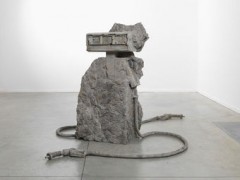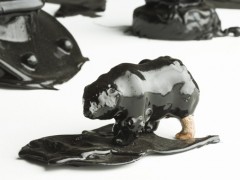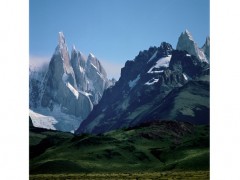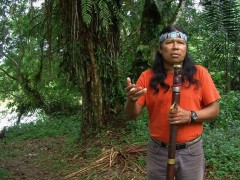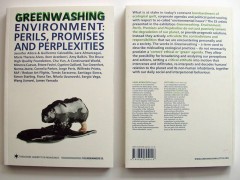Rights of Nature
24.01-15.03/2015
Nottingham Contemporary, Nottingham
The artists in this exhibition reflect on our current environmental crisis – economic, political and cultural, as well as ecological. The rights of nature to flourish free from human destruction are increasingly recognised in new environmental laws. Bolivia and Ecuador have recently enshrined the rights of Mother Earth in their legal systems.
Runaway global warming, environmental destruction and mass species extinction are all consequences of our fraught relationship with nature. Earth has been seen as an infinite supply of natural resources to be freely exploited for profit. Climate change caused by human behaviour has placed all life on the planet at risk – including our own.
North and South America, in particular, are sites of intense activity, linking ecologically-concerned artists, political activists and indigenous people to new legal initiatives. Recent philosophical developments are also rethinking the relationship between human and non-human life. Rights of Nature is a journey across the Americas, through the work of twenty artists, across all four of Nottingham Contemporary’s galleries. The Amazon, the Andes, the Artic and the Gulf of Mexico are among the ecological regions explored.
The larger historical backdrop to the exhibition includes the European conquest of indigenous people in both North and South America and the near extermination of their cultures and habitats. Latin American history, in particular, has been shaped by centuries of foreign plunder of its natural resources, beginning in the 16th century with the Spanish empire’s lust for silver and gold. More recently, the main beneficiaries have been multinational corporations, many of whom also profited under the region’s brutal US backed military dictatorships of the 1960s – 1980s.
Rights of Nature exposes how this European idea of human mastery of the planet was imposed on the Americas. In contrast, new forms of resistance are inspired by, and linked to, indigenous cultures that see themselves as part of an ecological continuum. The exhibition reveals how contemporary art is contributing to the global project of rethinking our relationship to other living things.
The exhibition includes Subhankar Banerjee’s epic photographs of migratory caribou in northern Alaska, Fernando Palma Rodríguez’s animatronic Monarch butterflies, restoring life to a threatened species, Abel Rodriquez’s exquisite drawings of plants, recording indigenous environmental knowledge passed down through generations, and Paulo Nazareth’s delicate installations of materials collected during his journey, on foot, between Belo Horizonte and New York City.
Artists: Eduardo Abaroa, Ala Plástica, Darren Almond, Marcos Avila Forero, Amy Balkin, Subhankar Banerjee, Mabe Bethônico, Ursula Biemann & Paulo Tavares, Center for Land Use Interpretation, Minerva Cuevas, Jimmie Durham, Harun Farocki, GIAP: Grupo de Investigación en Arte y Política (with Beatriz Aurora), Paulo Nazareth, The Otolith Group, Fernando Palma Rodríguez, Claire Pentecost, Abel Rodríguez, Miguel Angel Rojas, Walter Solón Romero.


 Home
Home
